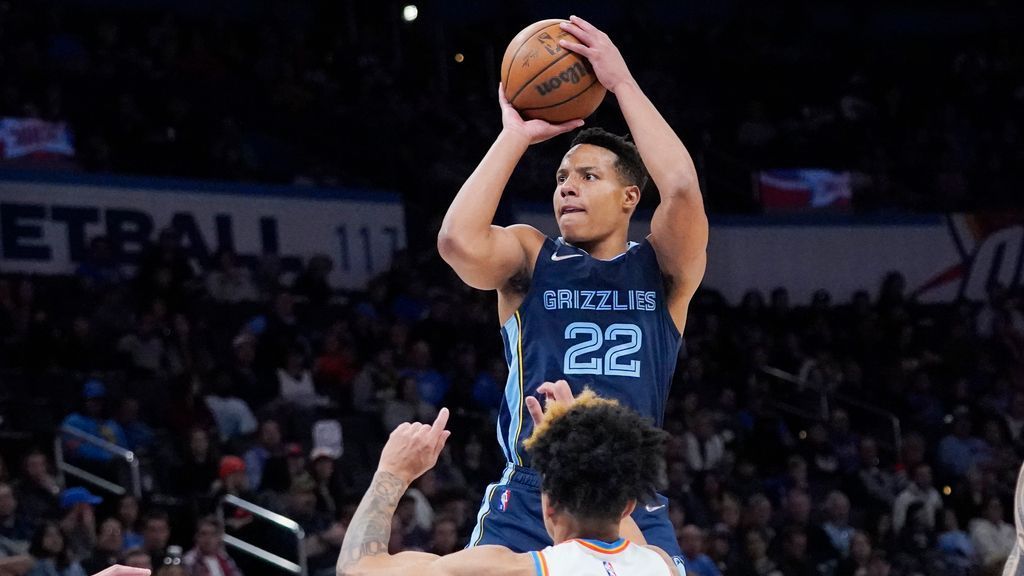In a snake draft if you don’t have the No. 1 pick, you’ll have a hard time getting Nikola Jokic. However, in a salary cap draft you can absolutely land the Joker, you just need to pony up.
The reigning two-time MVP has been going for an average of $70 of the standard $200 budget used in ESPN salary cap drafts. You can even pair him with his rival Joel Embiid for a cool $130 and create an incredibly talented, if awkward, MVP competition on your own fantasy roster. This strategy leaves you little left to build out the rest of your team, but speaks to the freedom managers have in this format.
With this freedom comes the responsibility to refine and define your strategy and player valuations. You determine which players best fit your philosophy, rather than the draft spot you have. Longtime ESPN fantasy hoops analyst Jon Cregan even wrote an evergreen opus covering all things salary cap. If you want to dive into the details of budgeting strategies and team-building philosophies germane to salary drafts, start with that piece.
Some might call paying up for Embiid and Jokic the beginning of a “stars and scrubs” approach, one that surrounds a handful of pricey superstars with a series of sleepers and fringe fantasy options. The extreme version suggests, in snake draft terms, you pay for two or three first rounders and then 10 late-round players.
This isn’t an ideal approach, mostly because there are so many high-level NBA stars and thus scarcity isn’t in your favor when pursuing a top-heavy build. Such an approach is more palatable in fantasy football, where there is more scarcity of reliable elite skill players.
In basketball, you can argue there are nearly 20 players “worthy” of first-round consideration in statistical terms. You should still pursue multiple stars atop your hoops roster, but it shouldn’t take up such a disproportionate part of your budget.
While snake drafts can certainly offer surprises and create real pivot points you might not have expected, the volatility of the unique market that develops in each salary cap draft is more pronounced. Being informed allows you to be adaptive in the draft, so you can recognize where to spend and where to stay patient.
Is the room not valuing players on tanking teams? You can be that team. Are your buddies letting older stars like LeBron James, James Harden, and Kevin Durant go well below reasonable value? You can and must adapt based on how the other members of your draft behave.
What makes fantasy basketball so rewarding is how managers recognize and value versatility. Save for points formats, most leagues are driven by categories. You need your superstar wings to produce, but you also need rim-protection specialists to supplement the build.
You know who the high-dollar superstars are but can you get the best price? It’s good to have some price points that you really stick to. There’s not a ton of strategy when it comes to pairing Durant and Dejounte Murray to open your draft if the driving force was purely value.
If you believe Durant is still a bankable $55 player (worth more than that last season) and you can land him at $46, that’s highly advisable. If the room was too scared to pay market value for Murray amid the mystery of his fit with Trae Young, that can prove profitable. Some drafts might unfold and see each player go well above expectations or projections. Variance from draft to draft is a feature of the format.
My favorite approach in recent years has been to identify a collection of sleepers and specialists at each position who can serve to complement whatever collection of higher-dollar stars I’ve already built. Which is to say, I’m more likely to consistently target and land these players given their markets aren’t as fluid as those of star players. I might not intend to draft Damian Lillard and Anthony Davis, but I am fine doing so if the prices are true values. I do intend, however, to draft Desmond Bane in almost all salary cap leagues this season.
Bane leaps off the page as a major value in salary cap drafts because he going to see a career high in minutes, he’s entering his prime in his third season, and the Grizzlies’ dont have much depth behind him. If Bane cruises past 30 minutes per night, he is on the path to posting prime Klay Thompson lines, with an average price point of just $8 in ESPN drafts.
In addition to Bane, I also like Herbert Jones for his incredible steal and block rates and scoring forces Jamal Murray and Collin Sexton. These are players that are going below $10 that could triple their current value this season. Guys like Devin Vassell, Gordon Hayward, Monte Morris, and P.J. Washington won’t cost much more than a dollar in most drafts, but will be on almost all of my rosters. Having a list of players you want will often result in you landing a lot of those players.
Being nimble during those early big-name nominations is pivotal. Value will absolutely develop; it just might not be in those first few names. Then you can pursue your own list of sleepers and values at each position. It sounds like something on a terrible motivational poster, but the balance between patience and preparation is what we aim to strike in salary cap drafts.
